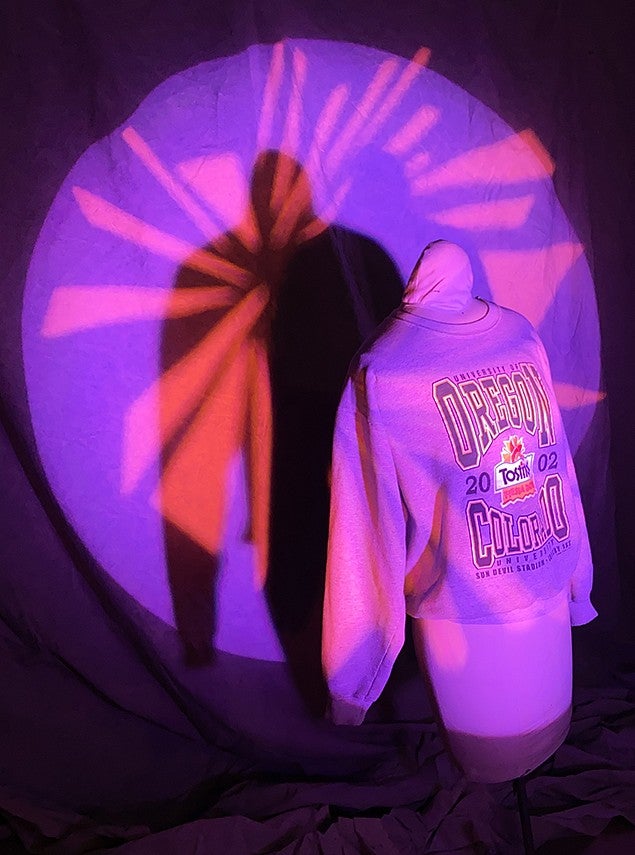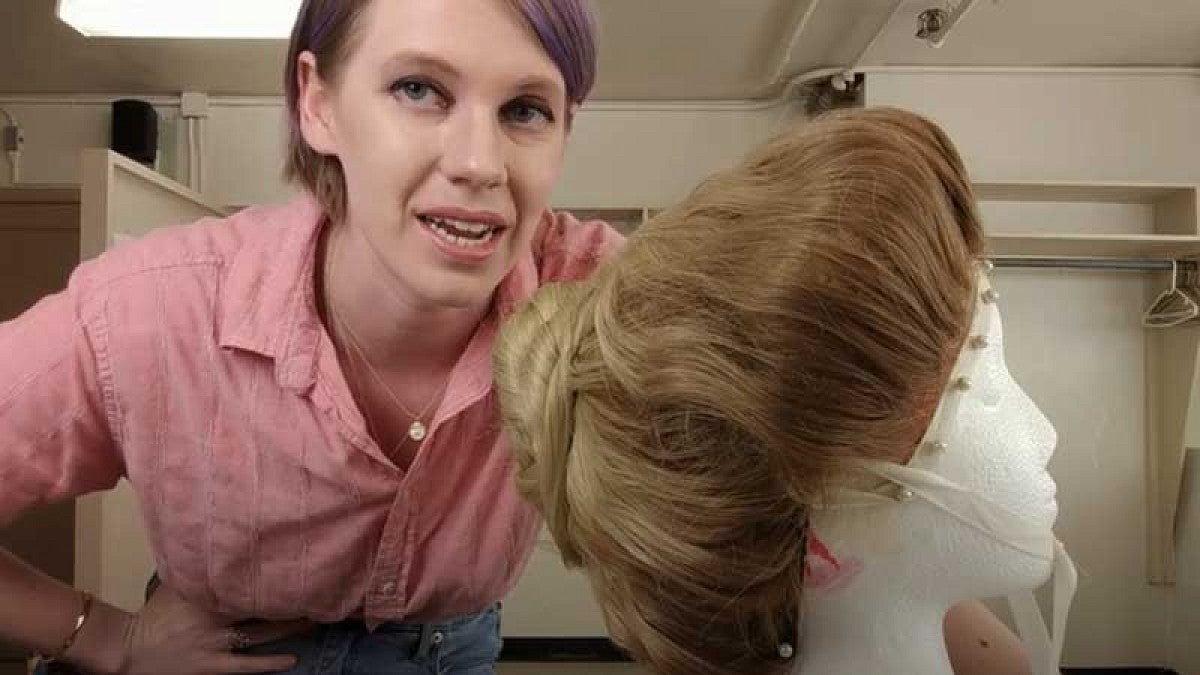With little more than a week to shift spring classes to remote teaching, faculty members in theater arts knew they’d need some major rewrites before the curtain rose on a new, and very different, term.
But how do you restructure lab and studio classes that require hands-on participation? How can you effectively teach students how to style wigs, apply makeup, sew costumes or configure lighting effects for the stage?
Several instructors in the UO’s Department of Theatre Arts have found innovative solutions for engaging their students remotely as the university copes with fallout from the COVID-19 pandemic.
Instructor and graduate student Ashley Baker debated canceling her advanced wigs and makeup class entirely, but after foregoing her own spring break and sitting down with several colleagues, she came up with an improvised version for a very hands-on class. In addition to their weekly Zoom class meetings where she demonstrates techniques, Baker has been creating a series of demo videos students can view online.
“Right now, I am literally taping my phone to a wall, hitting record and hoping I don’t drop it,” she said. “But one of the good things that’s coming out of this is I’m creating a framework through these demo videos, and if I do end up teaching this class again I have all this work that I’ve created for students to use.”
In tandem with the videos, Baker provides students with accompanying written tutorials with references to the textbooks they are using.
But there was also the matter of materials. Because some of the materials used in the class were too expensive for students to purchase on their own, Baker provided students with a scaled-back box of supplies.
“We ended up sending out Styrofoam wig heads instead of canvas wig heads, which is a shame because this class is not what I wanted it to be, but we’re making do with the best we can,” she said. “I told my students we’re doing the scrappy edition of this class where you’re basically getting the ‘You’re in the middle of nowhere; you have no access to anything’ version.”
Baker brainstormed with associate professor Jeanette DeJong, who was facing a similar dilemma supplying students with materials and equipment to adequately teach her beginning stage makeup and sewing class.
DeJong’s class projects involved hand sewing, machine sewing, makeup and period character design. For the hand sewing unit, DeJong also made up a package for each student that included fabric pieces, needles, and thread, and she demonstrated techniques during the Zoom class.
Students had the option of mailing their finished piece back or taking detailed front and back photos of the project. DeJong said that worked fairly well, but the machine sewing unit posed a problem because many students do not have access to a sewing machine at home.
DeJong’s solution was to have students write out detailed instructions on how to make the garment rather than turning in a finished project.
“Usually we have a lab component where students come in and sew in the costume shop, which is part of what we use to make our shows for the theater, but it’s also there for practice,” she said. “In this case, they’re not getting hands-on practice. It’s more like sewing machine theory rather than actual sewing, but it’s the closest thing I could think of to substitute sewing.”
For the stage makeup portion of the course, she plans to have students apply makeup to themselves during a remote class. Zoom allows them to turn video off while they’re applying it and rejoin the class when they need instructor feedback. Despite the challenges, DeJong said the students have been adapting.

When senior instructor Janet Rose found out that she’d be teaching her Lighting for the Stage class remotely, she jumped into it. She gathered up some lighting equipment — a couple of LED fixtures, a computer and monitors, a mannequin from the costume shop, and smaller pieces like gels and patterns — to set up a makeshift lighting lab in her garage at home.
The setup includes a computer and two monitor screens, a short T-shaped pipe on a stand to hold the two LED lighting fixtures, an off-white backdrop and the mannequin, which she uses to apply different fabrics to show color.
“Setting up the light lab wasn’t so tough, but I needed to set up lighting to light me, so I’ve got lights attached to a ladder and to my lawnmower too,” she said with a laugh. “And my dog walks through every now and then. This is not a professional light lab here.”
Normally, the students would hang and focus the lights themselves on site in either the Robinson or Pocket theaters.
“They would actually be clamping the lights on, pointing them in the right direction, putting the color in them,” Rose said. “Except for the goofy videos I’m making there’s no other way I can do it, but there’s still some theory and paperwork that will be the same no matter what.”
Through a combination of Zoom demos and computer simulations, Rose’s students are able to use the software to mimic what they would typically do through hands-on adjustment of the lighting.
“Judging from the assignments they’ve turned in, they’ve done pretty well. They didn’t expect that I’d be teaching this class in a garage,” Rose said. “I didn’t either.”
—By Sharleen Nelson, University Communications


